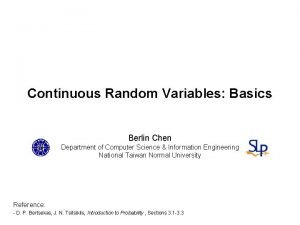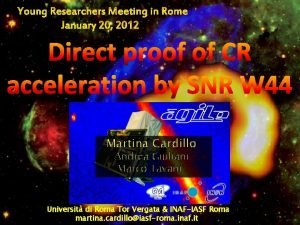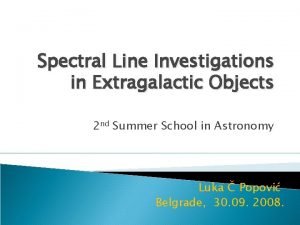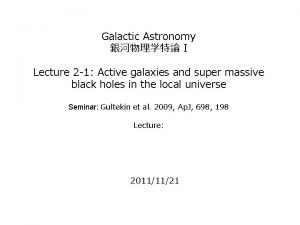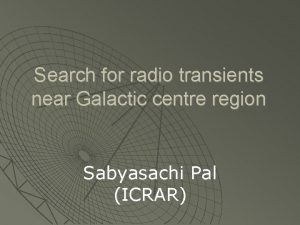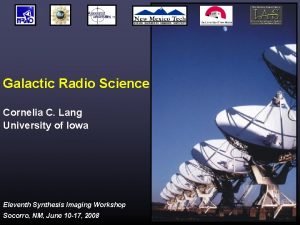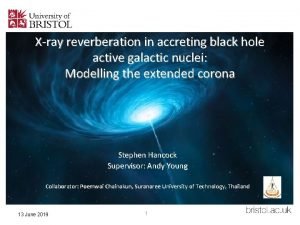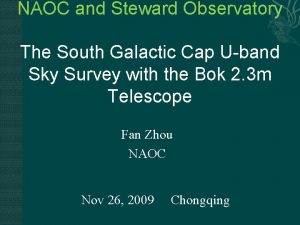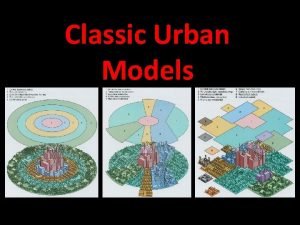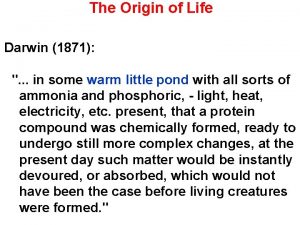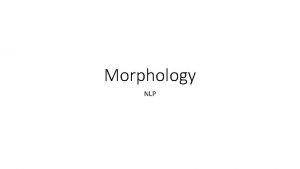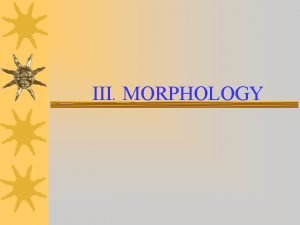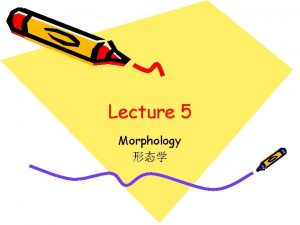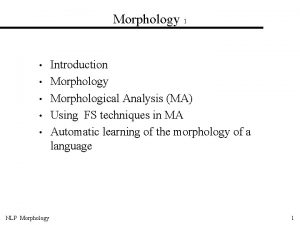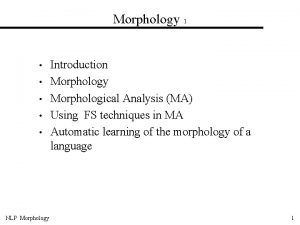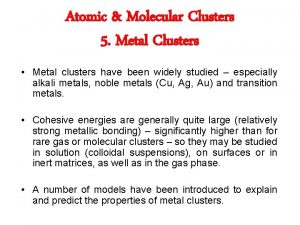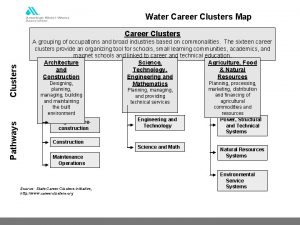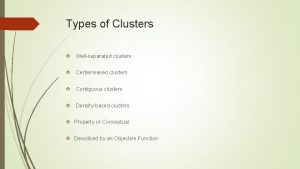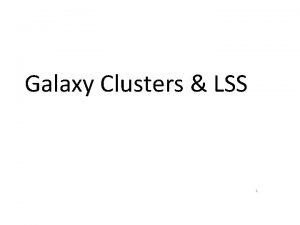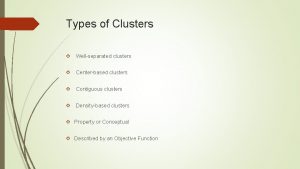Morphology of Galactic Open Clusters C W Chen

















- Slides: 17

Morphology of Galactic Open Clusters C. W. Chen & W. P. Chen National Central University, Taiwan 2/11 2003

Outline Introduction: Spatial structure of 7 Galactic open clusters The latest open cluster catalogue & 2 MASS PSC Morphology of open clusters Conclusions

Introduction: Galactic open clusters are distributed throughout and around the Galactic disk, so are useful tools to probe the Galactic structure and star formation history. Study of the structure of open clusters shows that stars in an open cluster are concentrated progressively toward the center (Chen & Chen 2002).

Sources toward NGC 2506 and the surface density within the boxed region.

Radial density distribution of NGC 2506. Cumulative density profile of NGC 2506. 1 -D density projection along the RA and DEC directions.

Conclusion of Chen & Chen 2002 The 2 MASS database is useful for open-cluster study. (Final release in the end of 2002? ? ? ) Stars in open clusters, regardless of their masses, are concentrated progressively toward the center. Evidences of structural evolution found. parental molecular cloud intrinsic gravitational interaction external perturbation

Questions we would like to address How would an open cluster shape out of the molecular cloud from which it is formed? How would it organize itself by internal gravitational interaction, and by external disturbances? To what extent the Galactic potential influences the morphology of an star cluster?

IIa. The Latest Open Cluster Catalogue: Dias et al (2002) compiled a new catalogue of open clusters which updates those of Lynga and of Mermilliod. New objects and new data on kinematics such as radial velocity, proper motion were included. Four hundred and fifty-six objects were added into the new catalogue to make it become 1607 clusters, of which 37% have distances, ages and color-excesses. Figure 1 plots the Galactic z distribution for young (less than 100 Myr) and relatively older star clusters. It can be seen that young clusters are located closer toward the Galactic plane.

Fig. 1. Left: z vs. Galactic longitude for open clusters younger than 100 million years. Right: The same for open clusters older than 100 million years. Young O. C. are more concentrated toward the plane.

IIb. Open clusters in 2 MASS We used the Two-Micron All-Sky Survey (2 MASS) star catalogue to analyze the morphology of open clusters. The 2 MASS data, being taken at near-infrared wavelengths, are free from much of interstellar extinction, and would thus reveal the true shape of a star cluster better than in optical bands (Fig. 2). We selected 36 open clusters from the Dias et al catalogue that have distance and age determinations, and also have complete 2 MASS coverage.

Fig. 2. Optical (left) and near-infrared (right) image of IC 348.

Morphology of open clusters Dividing each 2 MASS field (typically 42’) around a star cluster into spatial grids whose size depends on the richness of the cluster. Computing the surface number density of stars in each grid. Subtracting the Galactic background number density by fitting a surface to the outer part of each field. Fitting the star cluster with an ellipse, from which the eccentricity and orientation are obtained. Figures 3 -5 are examples of clusters with eccentricity 0. 9, 0. 7, and 0. 5, respectively. Figure 6 and 7 show the eccentricities versus distances and ages, respectively.

Fig. 3 NGC 1893 Fig. 4 NGC 1931 Fig. 5 NGC 2420

Fig 6: Eccentricity vs. z of 36 open clusters in our sample. Fig. 7: Eccentricity vs. Age of our sample clusters.

Conclusions Most open clusters are elongated. The higher z an open cluster locates, the more circular it is, showing the general influence of the Galactic disk on the morphology of a star cluster. As a cluster evolves, its internal dynamics would cause it to appear circular. However as a cluster becomes some 100 Myr, the internal relaxation and external influence (e. g. , Galactic tidal force, differential rotation) become competing factors in shaping a star cluster. The oldest and most eccentric star clusters may be in the process of disintegration. (NGC 2395)

NGC 2395 l, b: 204. 6052, +13. 9879 Heliocentric distance: 512 PC Age: 109. 07 z: 124 pc

 Chen chen berlin
Chen chen berlin Derivational vs inflectional morphemes
Derivational vs inflectional morphemes 영국 beis
영국 beis Galactic habitable zone
Galactic habitable zone Galactic plane
Galactic plane Peripheral model
Peripheral model Active galactic nuclei
Active galactic nuclei Galactic city model
Galactic city model Active galactic nuclei
Active galactic nuclei Galactic center radio transients
Galactic center radio transients Galactic phonics ure
Galactic phonics ure Combine vs galactic empire
Combine vs galactic empire Galactic
Galactic Active galactic nuclei
Active galactic nuclei Galactic cap review
Galactic cap review Model of urban structure
Model of urban structure Galactic habitable zone
Galactic habitable zone Glorck
Glorck
